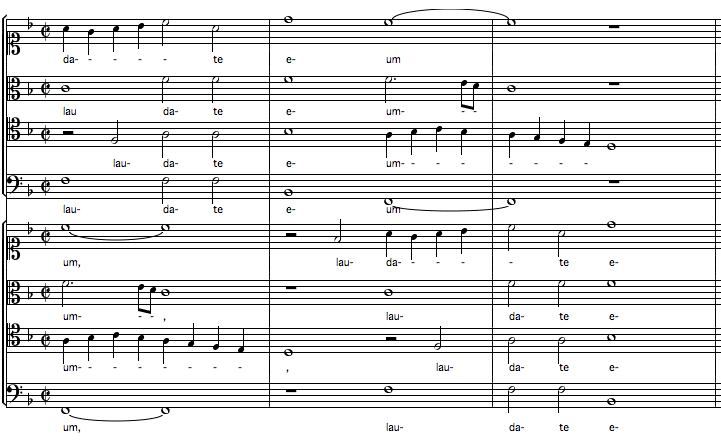Answer: I hope there are not many counterpoint students lying awake over this. I remember the same question arising when I was first studying. Parts sung in unison throughout are not considered to be parallel. In fact, parts moving continuously in octaves are not considered to be parallel. These normally come under the heading of mere orchestration of the underlying counterpoint.
If you perform a Bach 4-part chorale with a full orchestra you will have multiple players whose parts are moving in unison or possibly in octaves, but it's still 4-part counterpoint. The "rules" of counterpoint apply only to those essential parts, the parts whose melodies diverge.
Sometimes when rules threaten to cause harm we will want to remind ourselves what the rules are for: the stylistic rules of counterpoint are just guides, a recipe, for creating music whose several parts give the impression of being at once independent and working together in a common purpose. It's almost mystical. Four truly independent melodies would be senseless. Four melodies too closely united would lack the interest provided by independence. In ideal counterpoint you get both independence and unity at once.
So if your double choir counterpoint veers too much into parallelism, that reduces the independence of parts. But if two parts continually move in parallel while others maintain their independence, then you could say that those two parts are acting as one, which could be OK. But if those two parts are otherwise separate and momentarily become parallel, that is not so good - that reduces their independence and impoverishes the counterpoint for as long as the parallel continues.
That's the outline, anyway. A more interesting discussion can be found in Chapter VI of Knut Jeppesen's famous work, Counterpoint: The Vocal Style of the Sixteenth Century. Jeppesen says that the 16th century writers did avoid parallel voices even when writing in six or more parts, but that in the 17th and 18th centuries it became more acceptable to double one part with another. However, even the early composers allowed a little fudging when writing in more than four parts: "covered octaves" (two parts moving in opposite direction but still going to the same pitch name as the other voice) were permitted in outer parts even if moving by leap. And they tended to let voices rest, so that the amount of continuous writing in more than four parts was limited somewhat. An 8-voice work was set up as two opposing choirs of 4 parts each, which seldom were singing all at once. Still, Palestrina was able to maintain 8 non parallel voices for considerable stretches in works like Laudate Dominum:


